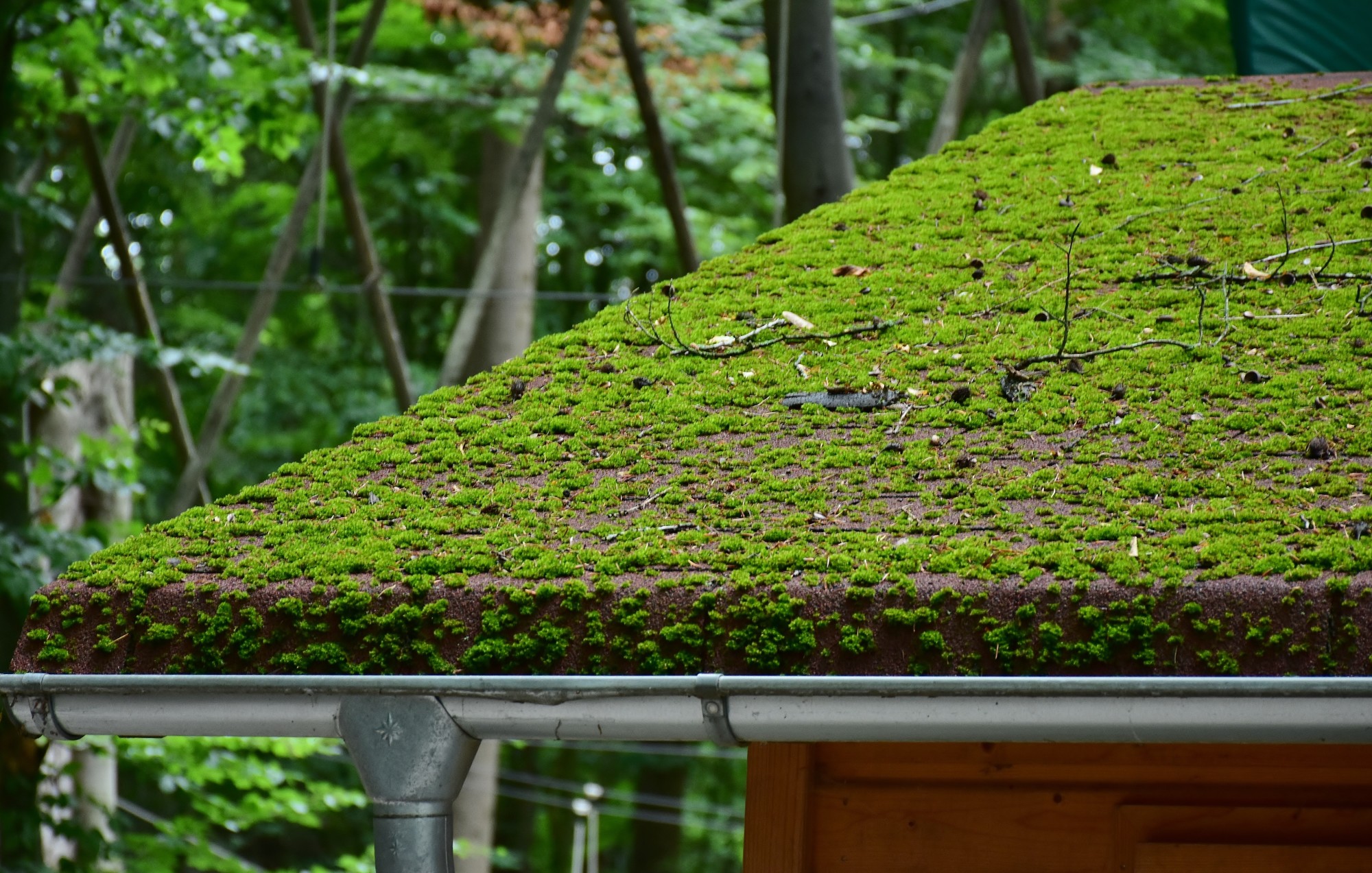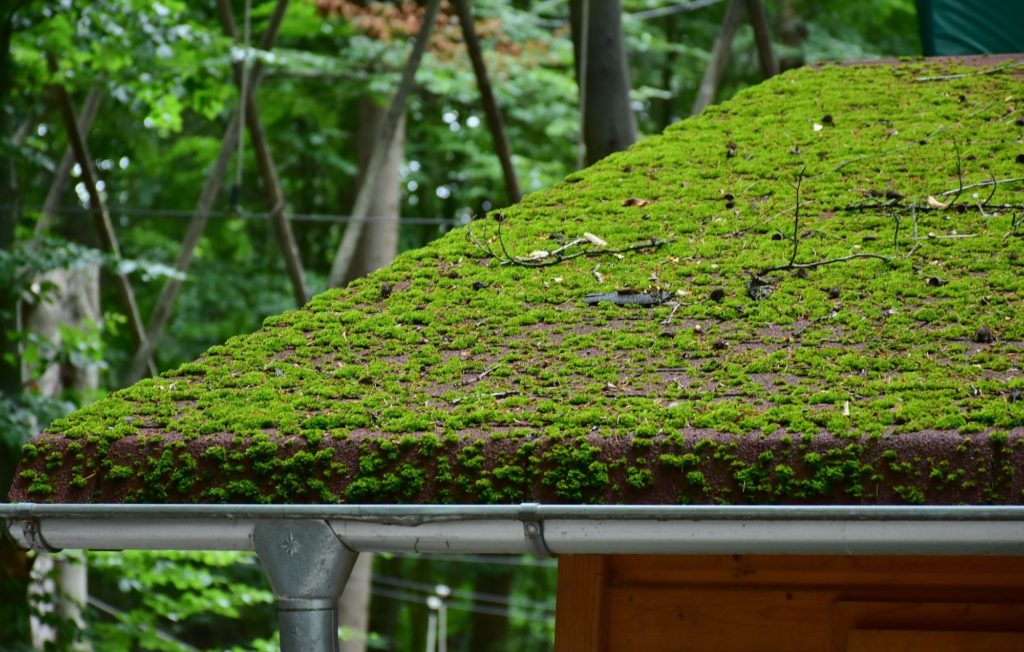
Japanese gardeners prize moss for its lush, drought-resistant qualities. People who enjoy rock gardens, water gardens, or backyard ponds, often grow moss because it’s nearly maintenance-free.
The lush green texture feels like a plush carpet on bare feet. On a roof, moss not only doesn’t look or feel attractive, but it’s also creating the perfect storm.
Should you worry if you notice moss growing on your roof?
Read our mini-guide and learn everything you need to know about roof moss.
Why Does Moss Grow on a Roof?
The shade is a commodity, especially if you live in a hot, sunny climate. In fact, people usually plant trees based on how much shade they’ll eventually provide.
Trees provide a welcome respite from the sun’s rays at mid-day but they also make it difficult for your roof to get enough sunlight. A lack of sunlight makes your roof susceptible to developing moss. Add in excessive moisture, and the risk is even higher.
As we mentioned earlier, moss makes a lovely carpet on a forest floor, but not on your roof.
Moss and Roof Damage
Mold holds moisture. When mold builds up on a roof, that excess moisture seeps through to the roofing materials.
Roofing materials, especially asphalt or wood shingles, wear out faster when they’re waterlogged. Moss roots eventually penetrate shingles causing them to separate. Shingles function as a protective cover for your roof and when they separate, the integrity of the roof suffers.
If you live in a cold climate where freezing temperatures are common, the shingles under a patch of mold may be more susceptible to frost damage and cracking.
Moss Is Not Mold
Just because they’re both green and grow from spores, doesn’t mean moss and mold are the same things. Speaking of color—moss usually grows in dense green mats (or clumps) Mold comes in several colors including, green, purple, white and orange.
Moss is a plant. It converts sunlight and soil to energy.
Mold is a fungus and converts decaying matter to energy.
Both convert things found in nature to the energy needed for life. You may find both on your roof but the causes are different and so are the treatments to remove them.
The Invisible Enemy
Moss is elusive. Homeowners often don’t notice they have a mold problem because they don’t see it at first.
In the early stages of mold growth, it’s not visible to the naked eye. Your roof may cultivate a mold farm for several weeks before you even see it.
Here’s a disturbing fact about mold: it only takes one tiny spore landing on your roof. That one spore gives birth and soon enough, you end up with a roof under attack—by mold.
Moss Can Clog Your Gutters
Do your gutters behave badly? Do they consistently backup during downpours? If you get up on a ladder and look down into the gutters, you may see moss growing.
Yes, it starts on the roof, but left untended, moss will eventually impact your gutters. You may not realize it but moss is a bigger threat to your gutters than leaves, branches, and other debris.
Moss is heavy and can put more weight on gutters than they’re designed to bear. It’s not only the weight, but moss also clogs gutters. You likely already know rain overflow from blocked gutters can damage both the exterior and interior of your home.
The first line of defense against moss in your gutters is the roof.
No Roof Moss Welcome Here
You may feel like you don’t have much of a defense against moss. Try these hints to keep moss away from your roof.
Trim tree limbs that hang over your roof. They shade the roof giving it less sun exposure. As you know already, moss thrives in a moist and shady environment.
Follow the sun. If you pay attention, you’ll notice the sun doesn’t always shine on the same part of the roof throughout the year. Depending on the season, some areas of your roof receive less exposure to daylight.
Inspect the side of your roof that doesn’t get as much sunlight more often.
How to Launch a Mold Attack
We’ve already determined moss and your roof doesn’t make good buddies. But don’t let a few patches of green get you down! Here’s what you do at the first sight of mold growth.
If you can attack moss while you still have a few small patches, you can clean it on your own. However, be careful about what you use as a cleaning tool.
Maybe your neighbors used a pressure washer and their moss disappeared. The problem with the pressure washer removal method is the spray can get under your shingles. Forcing water under shingles only sets you up for more problems, including a leaky roof, and lifted or broken shingles.
Unless you have training in pressure washing techniques, consider hiring a professional to come out and do the job correctly.
Don’t Let Moss Ruin Your Day
When you look up and see moss running rampant on your roof, don’t panic or stress out.
If you only have a small patch of roof moss, try cleaning it on your own. If you have a large moss infestation, don’t hesitate to hire a professional who not only will bring the right tools, they’ll bring the right skills.
Enjoy reading this post? Stick around and check out our archives. You’ll find an array of articles covering home improvement, lifestyle, and family. We’re sure you’ll find something to keep you entertained and informed!

